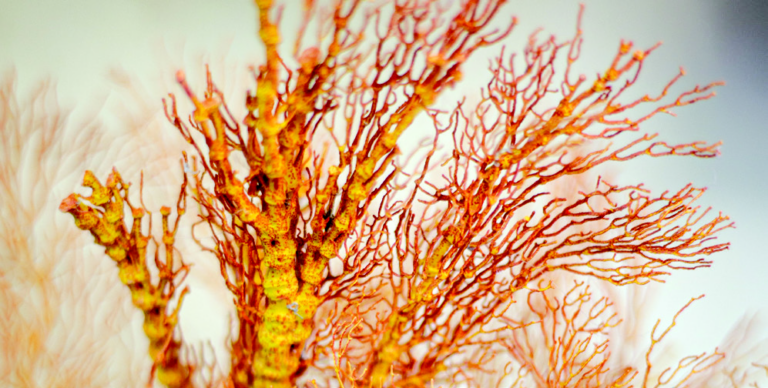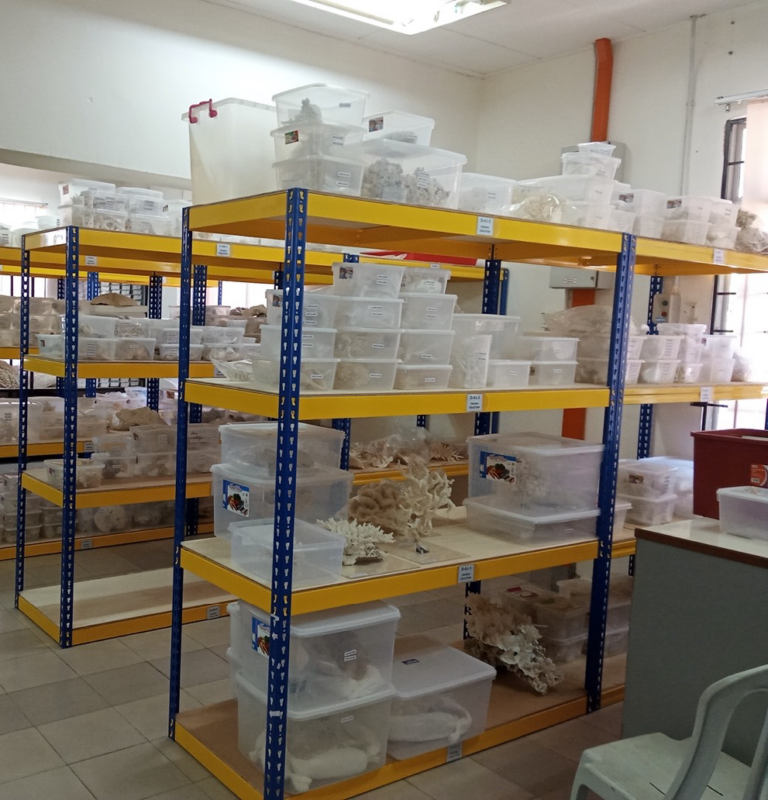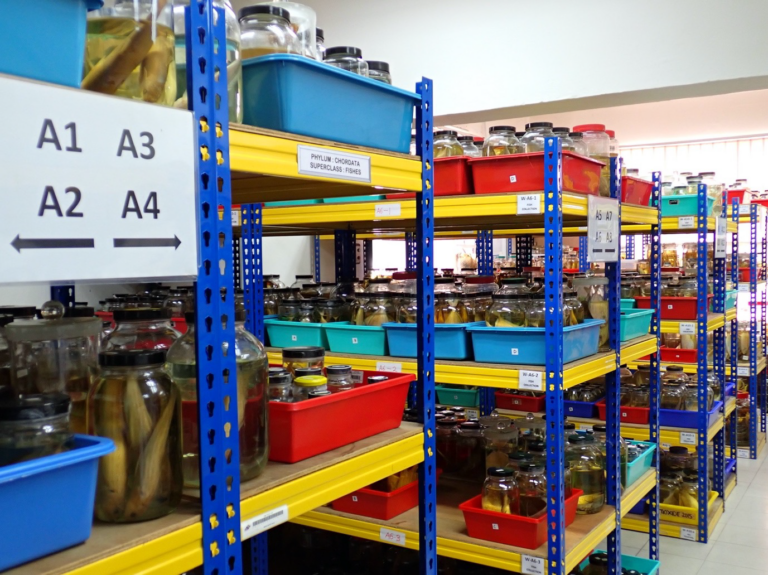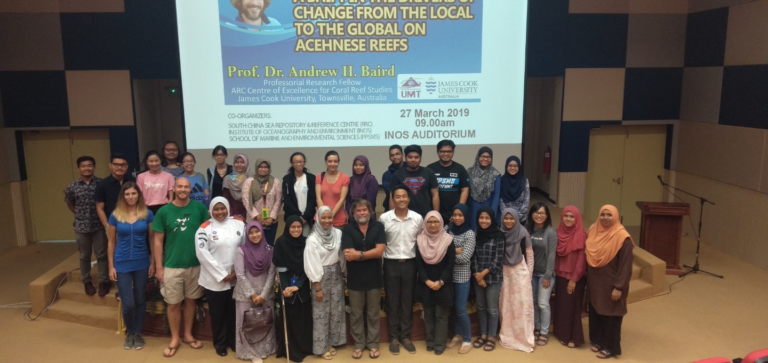
By Assoc. Prof. Dr Izwandy Idris, Head, South China Sea Repository and Reference Centre (RRC), INOS
The centre was set up in 2004. After two years, the number of registered specimens at the centre was a mere 38. But today the figure has grown to close to 60,000, with an estimated value of MYR 9 million.
Since its inception 18 years ago, the South China Sea Repository and Reference Centre (RRC) has successfully established itself as one of the leading marine repositories in Malaysia.
RRC’s establishment back then was largely influenced by the notion of Malaysia being a maritime nation.
The fact is that Malaysia’s marine area is more extensive than land (334,671 square kilometer vs. 329,847 km2), with a total of 4,675 km of coastline facing the Strait of Malacca, South China Sea, and Sulu Sea. The Strait of Malacca is the second busiest shipping lane in the world, and Malaysians are among the biggest consumers of fish in the world, with an average of 56.5 kg per person per year.
Without a doubt, Malaysia depends on the sea for trading, defence, food source, economic exploitation, and other indirect services. This dependency renders the ecosystem service provided by the seas essential for the survival and functionality of Malaysia as a nation.
Thus, for these reasons, information regarding our marine territory is highly needed. Required information ranges from details about physical, chemical, and biological components, including biodiversity. As our knowledge of the country’s marine biodiversity is still incomplete, a proper record is also needed to determine our known and possibly unknown diversity.
In addition, changes in the marine ecosystem due to climate change, pollution, resource extraction, and utilisation affect species composition. Progress in the taxonomic field (naming and describing organisms) may also cause certain species to carry a different name than before. Hence, biodiversity data must be accompanied by the physical specimens for verification and update.
Objective of RRC
RRC was set up to manage these physical specimens. Its main objectives are to properly manage, record, and prepare marine specimens for various usages, including research, reference, and knowledge transfer.
RRC is one of the units of the Institute of Oceanography and Environment (INOS). When RRC was first formed, it was known as Biodiversity Museum. It then underwent several rebranding exercises until 2012, when the current name was adopted.
Of the total specimens currently deposited at RRC, 70 are categorised as type specimens, either holotype or paratype, which are directly used to describe new species in science. Holotype is a specimen on which a species’ description is mainly based. Paratype on the other hand is an additional specimen that is added to a species’ description at the original time of the description.
The specimens at RRC have come from the research conducted by UMT researchers and also those from other local institutions, such as Universiti Putra Malaysia and Universiti Sains Malaysia, and from international organisations, including Kagoshima University in Japan and the Australian Museum.
Specimens deposited at RRC are the physical evidence of the existence of these organisms in Malaysian waters and specific areas within our territory. This information can later be used as a baseline for area conservation, species-specific conservation, alien and invasive species control, commercial applications, and justification for sovereign rights or areas of national interest.
Many of the deposited specimens originated from unique places or locations that have strategic importance to the nation. For example, hard corals were collected from Malaysian-claimed atolls at Spratly islands, and gastropods were collected from various shipping ports.
Valuable Specimens
Undoubtedly, specimens deposited at RRC have high scientific values; therefore, RRC regularly receives visits from local and international taxonomic experts, who come to collect valuable data that is later translated into scientific publications.
Deposited specimens at RRC are managed based on the Museum Management Handbook by the National Park Service, USA. Moreover, RRC has upgraded its database by acquiring a licence from Re:discovery Software Inc. USA to use its collections management software (Proficio). These systems (collection management and database) have put RRC on the same operational level as other natural history museums/repositories worldwide.
As a result, RRC has received several recognitions from various agencies. The Ministry of Natural Resources (national marine repository centre) and the Malaysian Biodiversity Information System (MyBIS) have recognized RRC as a marine diversity data provider. In addition, the Australian Government has identified and certified RRC as one of two agencies in Malaysia for specimen exchange and transfer with the Australian Counterpart. In 2017, RRC was appointed by the Ocean Biodiversity Information System (OBIS) as the Malaysian Node.
RRC staff, albeit small in numbers, are well-experienced and passionate about their tasks. For these reasons, they have also been invited by several agencies to assist and set up biodiversity-themed exhibitions, such as the NRE Interactive Gallery at Bukit Nenas, Kuala Lumpur, the transparent fish exhibition at Aquaria KLCC, the eco museum at Forest City Johor, and Natural History Exhibition at the State Museum of Terengganu.
As part of its knowledge transfer programme, RRC has also conducted several technical workshops on taxonomy and specimen management for researchers and technical staff, subsequently promoting the importance of natural history repositories among the public.
Awarded SOA Microgrants
RRC staff and associates have been awarded microgrants from the Sustainability Ocean Alliance (SOA) since 2020, starting with a microgrant for the new approach in biodiversity teaching using epoxy (Epoxonomy). The centre then was awarded a microgrant for the sharing of information via database (Lab to Web) in 2021. These microgrants have allowed the RRC team to show their capability and subsequently attracted UNIQLO to co-sponsor RRC Open Day 2022, consisting of both online and physical interactions with target audiences. This year, RRC has received another grant from SOA to enhance the digital repository interface under a project called Malaysian Aqua Archive (MAQIVE). This project will allow greater access to RRC collections remotely to further encourage research and knowledge transfer.
Nevertheless, it is not all smooth sailing for RRC. Like other natural history museums/repositories, the centre faces daily struggles with issues such as operational expenditure, human resource, capacity development, perception, and mindset. RRC’s involvement and interactions with other entities, such as MyMuse (Committee of Museums and Galleries-Malaysian Public Universities), provide useful feedback on matters related to natural history collections in Malaysia.
Having many taxonomists working as academics at UMT is also an advantage for RRC. They provide support in scientific inputs
and grant applications, and offer technical advice on specimen management.
Recently, a new renovation project has been approved by the UMT’s leadership to upgrade the facility and infrastructure at RRC. The renovation aims to ensure the specimens at RRC are in excellent condition, efficiently support the research ecosystem at UMT, and enhance collaborative research with other institutions. In addition, the upgraded facility will allow RRC to accept non-marine specimens (terrestrial and freshwater) as part of the collections.
RRC has come a long way from the time it was first set up, and judging from its present performance, it can be argued that RRC
has established itself as one of the leading repositories in the country.
It is quite an achievement for a centre that had a mere 38 specimens within the first two years of its existence.

Dry collection room hold coral specimens from all over Malaysia including offshore atolls off Sabah

Examples of type specimens @RRC – holotype (red band) and paratype (blue band) used to describe new species

Wet collection room – fish make the most of specimens in this room, waiting for research

Committed and experienced RRC team ensuring the quality of deposited specimens for research and teaching is at the highest level

RRC regularly conducts knowledge transfer activities, such as a natural history seminar delivered by a visiting researcher

RRC regularly receives visits from international researchers who come to examine the deposited specimens. One researcher is Prof Julia Sigwart from the Sackenberg Natural History Museum, Germany.

Copyright © INOS | Institute of Oceanography and Environment | Universiti Malaysia Terenganu | 2024. All rights reserved.